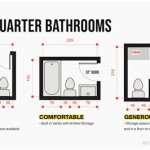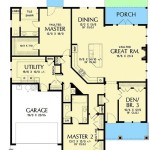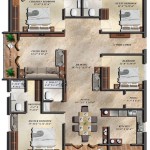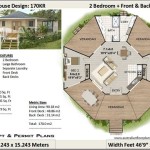How To Get Floor Plans Of An Existing House
Obtaining floor plans for an existing house is a crucial step in various projects, ranging from simple renovations to complex real estate transactions. Accurate floor plans provide a visual representation of the home's layout, dimensions, and spatial relationships. These plans can be utilized for interior design, furniture placement, remodeling projects, property valuation, insurance purposes, and even historical documentation. The process of acquiring these plans can vary in difficulty and cost, depending on the age of the house, the availability of records, and the desired level of detail.
This article will explore several methods for obtaining floor plans of an existing house, outlining the advantages and disadvantages of each approach. Understanding these options empowers homeowners, buyers, and professionals to make informed decisions based on their specific needs and circumstances. The methods range from accessing readily available resources, such as municipal records, to engaging professional services for precise measurements and drafting.
Checking Municipal Records and Online Databases
One of the first steps in the quest for existing floor plans is to explore publicly available resources. Municipal records, often maintained by local government offices such as the city hall, county recorder, or building department, frequently contain archived documents related to properties within their jurisdiction. These records may include original building permits, survey maps, and, most importantly, floor plans submitted during the construction or renovation phases of the house.
The accessibility of municipal records can vary widely depending on the location and the age of the property. Older homes may have less comprehensive documentation compared to newer constructions. Some municipalities are transitioning towards digitization, making these records accessible online through searchable databases. This online access can significantly simplify the process, allowing individuals to conduct preliminary research from the convenience of their homes.
To access municipal records, it is generally necessary to contact the relevant local government office. This can often be done through their website, phone, or in-person visit. When requesting information, it is crucial to provide accurate details about the property, such as the address, parcel number, and any known history of construction or renovations. Fees may apply for accessing and copying the requested documents.
It's important to manage expectations when relying on municipal records. The available floor plans may be outdated, incomplete, or lack the level of detail required for specific projects. Additionally, not all municipalities retain floor plans for an indefinite period, and some records may have been lost or damaged over time. However, this method provides a starting point and, in some cases, may yield valuable information at little to no cost.
Beyond municipal records, some real estate websites and appraisal databases may occasionally include floor plans as part of property listings or valuation assessments. These plans are typically created during the selling process or as part of a professional appraisal. While the availability of these plans is not guaranteed, it is worth checking these resources as a potential source of readily accessible information.
In cases where the property has been recently sold or appraised, the real estate agent or appraiser may be willing to share the floor plans with the new owner or prospective buyers. However, it's important to respect their professional obligations and obtain consent before sharing any confidential information. These plans can serve as a helpful starting point, though verifying their accuracy against the actual property is always recommended.
Measuring and Drafting the Floor Plans Yourself
If existing floor plans are unavailable through municipal records or other sources, the next option is to create your own. This involves manually measuring the interior dimensions of the house and drafting the floor plans based on those measurements. While this method requires some effort and attention to detail, it can be a cost-effective alternative to hiring a professional.
To accurately measure the house, you will need a few essential tools: a laser distance measurer (highly recommended for accuracy and speed), a measuring tape (for shorter distances and verifying measurements), a notebook or tablet for recording measurements, and a pencil or pen. It is also helpful to have a basic understanding of architectural symbols and drafting conventions.
Start by creating a rough sketch of the house layout, including the exterior walls, interior walls, doors, and windows. Then, systematically measure each room, recording the length and width of the walls, the dimensions of doors and windows, and the location of any built-in features such as closets, fireplaces, or appliances. Pay close attention to angles and offsets, ensuring that all measurements are accurate and consistent.
Once you have gathered all the necessary measurements, you can begin drafting the floor plans. This can be done manually using graph paper and a ruler, or digitally using computer-aided design (CAD) software or mobile apps designed for creating floor plans. CAD software offers greater precision and flexibility, allowing for easy editing and scaling of the plans. However, it may require some training or experience to use effectively.
When drafting the floor plans, adhere to standard architectural conventions, such as using specific symbols to represent doors, windows, walls, and other features. Ensure that the plans are drawn to scale, indicating the ratio between the dimensions on the drawing and the actual dimensions of the house. This allows for accurate interpretation and use of the plans for various purposes.
Creating floor plans yourself can be time-consuming, especially for larger or more complex houses. It also requires a certain level of skill and attention to detail to ensure accuracy. However, it can be a rewarding experience, providing a deep understanding of the house's layout and spatial relationships. These self-created plans can be sufficient for basic remodeling projects, furniture placement, or creating a visual inventory of your belongings. However, for more complex projects or official purposes, it may be necessary to engage a professional to create certified floor plans.
Accuracy is paramount when creating your own floor plans. Small errors in measurement can compound and lead to significant inaccuracies in the overall plan. It is advisable to double-check measurements and verify the consistency of the plan against the actual property. Furthermore, consider taking photographs and videos of the house to supplement the floor plans, providing a visual reference for details and features that may not be accurately captured in the drawings.
Hiring a Professional Architect, Draftsperson, or Measurement Service
For the most accurate and detailed floor plans, the most reliable option is to hire a professional architect, draftsperson, or measurement service. These professionals possess the expertise, tools, and experience to create precise and comprehensive floor plans that meet specific requirements. While this method is generally the most expensive, it offers the highest level of accuracy and reliability, making it suitable for complex projects, official purposes, and situations where precision is critical.
Architects are licensed professionals who can provide a wide range of services, including designing new buildings, renovating existing structures, and creating detailed floor plans. Draftspersons are skilled technicians who specialize in creating technical drawings and plans based on architectural specifications. Measurement services specialize in accurately measuring buildings and creating floor plans based on those measurements.
When selecting a professional, it is important to consider their qualifications, experience, and reputation. Check their credentials, review their portfolio of previous work, and read online reviews or testimonials from previous clients. It is also advisable to obtain multiple quotes to compare prices and services.
The process of hiring a professional typically involves an initial consultation to discuss the project requirements, budget, and timeline. The professional will then visit the property to take measurements and assess the existing conditions. They may use laser scanners, 3D cameras, or other advanced tools to capture accurate measurements and create a detailed point cloud of the interior space.
Based on the measurements and assessment, the professional will create floor plans using CAD software or other drafting tools. The plans will typically include detailed information such as wall dimensions, door and window locations, built-in features, and room labels. They may also include additional information such as electrical outlets, plumbing fixtures, or furniture layouts, depending on the specific requirements of the project.
The cost of hiring a professional to create floor plans can vary widely depending on the size and complexity of the house, the level of detail required, and the professional's fees. It is essential to obtain a clear and detailed quote before proceeding with the project to avoid any unexpected costs. While the initial investment may be higher, the accuracy and reliability of professional floor plans can save time and money in the long run by preventing errors and ensuring that all design and construction work is based on accurate information.
Furthermore, professional floor plans can be certified, which is often required for building permits, insurance claims, or other official purposes. Certified floor plans provide a guarantee of accuracy and compliance with relevant building codes and regulations. This can provide peace of mind and ensure that the plans are accepted by authorities or other stakeholders.
Before the professional begins the measurement process, it is important to clear access to all areas of the house and remove any obstructions that may hinder their work. This will help ensure that the measurements are accurate and that the project is completed efficiently. Communicate any specific requirements or preferences to the professional upfront to ensure that the floor plans meet your needs and expectations.

9 Ways To Find Floor Plans Of An Existing House Blueprints Archid

9 Ways To Find Floor Plans Of An Existing House Blueprints Archid

9 Ways To Find Floor Plans Of An Existing House Blueprints Archid

9 Ways To Find Floor Plans Of An Existing House Blueprints Archid

How To Get Blueprints Of Your House

House Plans How To Design Your Home Plan

Floor Plans With Dimensions Including Examples Cedreo

House Plans How To Design Your Home Plan

Draw Floor Plans In Half The Time Cedreo

House Plans How To Design Your Home Plan
Related Posts








